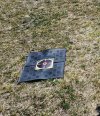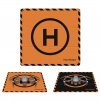With my old Phantom 4 I could land the aircraft manually - meaning I could control the aircraft until it physically sat on the ground and then manually turn the motors off by bringing the sticks together.
Q. Can this be done on the Air2S? It seems all one can do is bring the aircraft to within half a metre or so from the ground then have the aircraft stop (due to the sensing of the ground by the aircraft), and one has to press the auto land.
I find this not a good way because I use a landing pad (often out in grassy areas) so need to line up the air aircraft on that to stop the blades hitting the grass. The auto land often doesn’t line up very well to the landing pad and my blades are cutting into the grass when it lands off-centre.
Q. Can this be done on the Air2S? It seems all one can do is bring the aircraft to within half a metre or so from the ground then have the aircraft stop (due to the sensing of the ground by the aircraft), and one has to press the auto land.
I find this not a good way because I use a landing pad (often out in grassy areas) so need to line up the air aircraft on that to stop the blades hitting the grass. The auto land often doesn’t line up very well to the landing pad and my blades are cutting into the grass when it lands off-centre.













